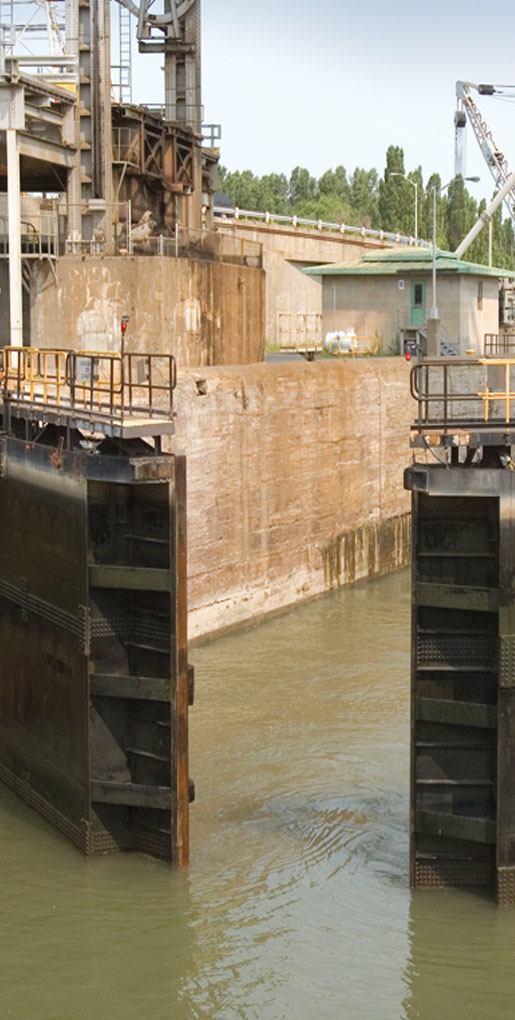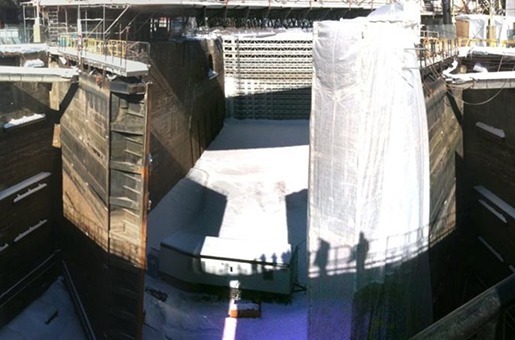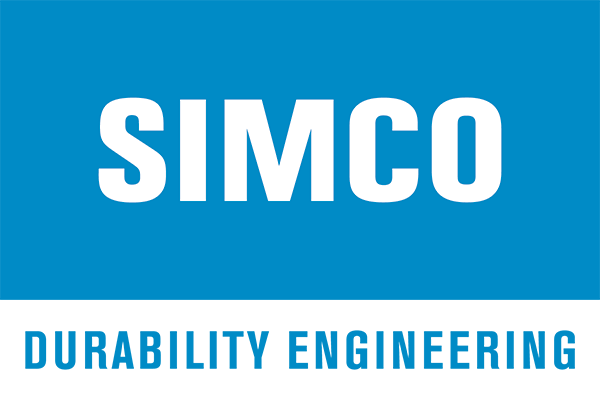
St. Lawrence Seaway Locks
Established in 1998, the Saint Lawrence Seaway Management Corporation (SLSMC) is responsible for the safe and efficient movement of marine traffic through its Canadian Seaway facilities. The Seaway is a deep draft waterway extending 3,700 km (2,340 miles) from the Atlantic Ocean to the head of the Great Lakes and includes 13 Canadian and 2 U.S. locks.
Built over 50 years ago, the Saint-Lambert, Côte Sainte-Catherine and Beauharnois superior and inferior locks now suffer from AAR (Alkali Aggregate Reaction). Over the past several years, the SLSMC has undertaken a series of measures to monitor and analyze the degradation problem and possible impacts on its structures. A yearly maintenance program was developed and the work performed over the last 30 years totaled about $7 million. Faced with such costs, it was imperative to fully understand the degradation problem and its progression over time in order to effectively plan and manage interventions and required expenses in the short, medium to long term.
The consequences to this degradation problem are progressive loss of lateral clearance of the locks and progressive misalignment of heavy mechanical elements. Therefore, without any major interventions, the passage of the largest ships allowed in the SLS will become critical under winter (icy) conditions.
SLSMC’s objectives were to determine the best possible strategies (technical solution, intervention, maintenance program, operating strategy, etc.) to manage the risks associated to the AAR problem and various degradation issues that could impact the proper functioning of the locks and to extend their service life by 50 years.
In order to ensure the best possible solutions were provided for the effective and efficient rehabilitation of the locks, a panel of experts was formed. The panel consisted of specialized experts from Oxand, SIMCO and Hatch Mott McDonald engineering firms.
The panel’s scope of work consisted in a list of potential solutions while using a risk-based filtering approach to ensure: the effectiveness of potential solutions in reducing the levels of risks; the identification of risks inherent to the solutions identified; and the constraints associated with implementing the recommended solutions while maintaining normal SLS operations.
SIMCO’s scope of work in this project was to:
- Conduct a complete review and critical analysis of existing studies
- Provide an expert opinion as to the rehabilitation of the structures in considering AAR degradation
- Perform concrete material characterization and numerical simulations with STADIUM® to determine the current extent of AAR deterioration affecting the structures and its likely progression over time as well as identify other potential degradation mechanisms
- Help formalize the process as to the risks and costs to be taken into consideration in the prioritization of identified repair solutions
- SIMCO provided SLSMC with an accurate deterioration assessment and recommended potential solutions to remove the deteriorated material considering time and budget constraints.
Download PDF Project Sheet
Quick Fact
Over 50 studies were reviewed and analyzed on AAR degradation mechanism and its potential effects over time to help in determining the best remedial strategy.


